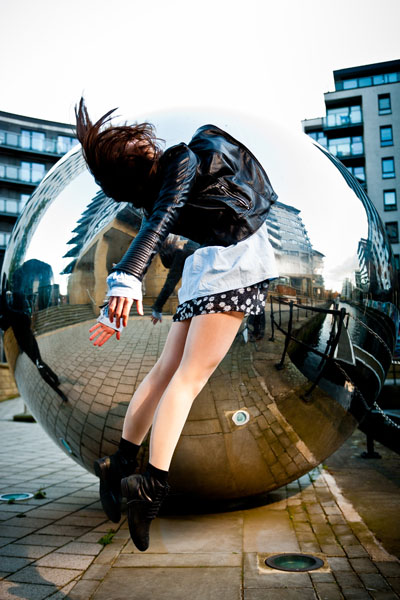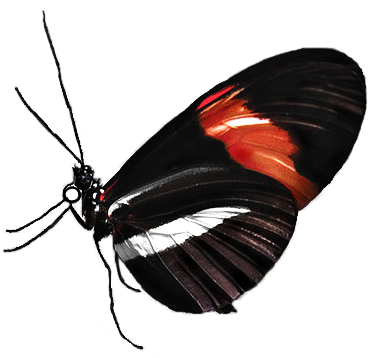One man's journey into dance photography
Lets start with a quote from Tolkein,
"It’s a dangerous business, Frodo, going out of your door,” he used to say. “You step into the road, and if you don’t keep your feet, there is no telling where you might be swept off to."
Frodo Baggins about Bilbo, The Fellowship of the Ring, Three is Company.
When you first start taking photographs with your newish DSLR camera it is hard to imagine where you are going to be in a number of years time. It can be an adventure! For most of us it is uneventful, but for me it has been quite a journey. In recent years I have taken some photographs that I would have never dreamed of back then and met (in some cases befriended) some amazing (some on the crazy side of barmey) and talent dancers.
First steps
My first ever photo shoot was with my house mate and her friend in 2007. Both of them are dancers. I knew nothing about photography let alone how photograph a dancer and make them look good. I could just about work my way around the camera. But I guess a seed was planted that day that has sprouted and grown.
I would go on to photograph these two ladies over the next couple of years. It was more out of interest in photography, to help them out and a desire to push the boat out more than anything else. I had a new and better camera and a flashgun, but my understanding of photography had not grown that much. Even when I became a full-time pro, I will admit I knew very little about real photography.
It was not until I started to learn from top professional photographers at the Society of Wedding and Portrait Photographers (SWPP) and examine their work that my education really started. I now attend their annual convention every year because I always learn so much more about photography.
Revelation
Then I came across a video by Nikon and hosted by a photographer called Joe McNally. He introduced a feature of flashguns called 'High Speed Sync'. It means you can shoot at fast shutter speeds over and above 1/400th (just fast enough to freeze most dance moves) of a second and light your subject in the process. The problems with most studio lights is anything about 1/200th of a second and you experience shutter lag (I am not going to bore you with the technical side). For me it was a revelation!
Anyhow, Joe showed the viewers how to capture dance movement with these flashguns and his camera. I had pretty much the identical gear, so I assumed I should be able to duplicate what he had done.
In October 2013, I called my friend Becky up and we did a test shoot. After a lot of playing around with settings and trying to figure out how to photograph her movement I took a few decent photographs.
Many months later at the SWPP convention in January 2014, John Denton held a hands-on class on Dance and movement photography. We were introduced into how to use object like veils, skirts and even flour to give a photograph a sense of movement. It was also good to learn from the dancer's perspective too. I did learn some valuable lessons that day that I still use today.
More experimentation and breakthrough
In February 2014, I went on to experiment a bit more organising a shoot with Emily and Anna. This was more far more about dance poses and lighting effects rather than movement, but I got to try out some cool ideas and something that completely bombed.
In March 2014 I met and worked with Rhiannon. It was during this shoot that the essential elements came together and I finally bagged a series of dance photographs I was really proud of. It also helped that she had an interest in photography. I was able to put into practice a number of tips I have seen and learnt during the SWPP class. Even today I look back at the photographs and I still love many of them and they make my portfolio.
Mixing with dancers
From there I spoke to Katie Gedes owner of the Dance Studio in Leeds. She asked me to be involved in taking photographs at a dance show for charity. There I saw break dancer perform called Lauren Haywood. We worked together on a couple of shoots (second one).
Being a different kind of photographer
Lauren mentioned to me that I was unlike any photographer that she had worked with before. The others would take several shots in the hope of taking something good. I spent time discussing, observing and then asking her to do a move again. Only then would I take a well timed shot. Instead of hundreds of photos to wade through, I only took fifty during the session and with most of them being of a high standard! I also brought my flashguns along and added extra light to the scene.
Onwards
I then worked with Laura Firth on a shoot because she wanted photographs for her portfolio. She was so much fun to work with. I think she missed just dancing and I was giving a means to do what she loves. She had been photographed before, but the shots were pretty static and lacked energy. The lighting was pretty non-existent. I just told her to let loose and she did. We did another shoot a bit later on. I often find with the second shoot the results are so much better because dancer and photographer become more comfortable and accustomed to each other.
I kept experimenting working with Nicci to improve what I had done before. I tried a lot of techniques like strobe lighting and long shutters speeds. It worked, but it is not something I have pursued in the long-term.
The Northern School of Contemporary Dance
On a very cold February evening in 2015, at an event called Net Night, I saw a small Chinese dancer pull off some 'sick' moves and a girl with long curly dark brown hair do some serious head shaking. Little did I know at the time I would work with both of them a number of times over coming year to the point I now consider both of them friends.
It started off with a portrait shoot with Jo Bo pulling some poses only a dancer would consider. Then into the lighting studio for shoots in a blacked-out room. This was perfect for long shutter speed photography. I also met Erica Mulkern. She is a stunning dancer, elegant and one of the most dedicated I have met to date. Later we would work together throwing flour around and making a lot of mess. It was loads of fun too.
The first shoot in the lighting studio led to another. I had a better idea of what you can do in there including suspending one of my flashguns from the ceiling for one shot! This was when it all started to condense. Being able to work with a number of dancers all in one area certainly pays off.
Music, Minions and cake?
About this time it had been suggested to me that music should be played during a dance shoot. I have found this to be a definite no, no. First, it is much harder to commuicate with each other and second, dancers will start dancing. This might not sound like a bad thing, but they rarely dance where you want them to, i.e. in between your lighting set up or in the frame of your camera. Once they start it is hard to stop them.
Working with the students at the NSCD is akin to having the Minions from Dispicable me running around and playing music only makes it worse, much worse! Nuff said really!
Cookies and or cake are a definite resounding, YES! Feed these to them and they will be your best friends until everything has been devoured. Oh, there are only portions, there is no such thing as a small one when it comes to cake.
Outdoors
When I am learning from more experience photographers, part of me is thinking, "Can I apply this technique to dance photography?". If I can I try it. This lead to this shoot outside the Royal Armouries in Leeds. I reckon it pays to be able to work indoors and outside. Outdoors gives the dancer an environment or scene to interact with. The photographer has a challenge when it comes to lighting them correctly and where to locate them. The photograph at the top of this page is an example of that featuring Luca Bakos from Hungary.
Then lots of experimental ideas with Kit back at the NSCD during a half-term. A paid shoot with Laura Simpson followed. She dances with aforementioned Lauren Haywood.
Going with the Flo
We are now into 2016 and it started off with Flow Foster working in our home city of London at the South Bank and El Jo Bo a few weeks later. Once again, I was trying out ideas I had learnt from the SWPP convension and trying to apply them in the context of dance photography. A few months later I worked with Flow in the studio.
Then (in the first week of June) two dance shoots in as many days one with Sara and Laura in the studio and Laura with smoke it the woods. The latter was such fun to shoot with the smoking being very umpredicatable at times.
Where to next?
I have a few ideas in my head for shoots that involve more pyrotechnics and smoke as well as reproducing a few dance photographs of Audrey Hepburn (my favourite actress of all time). I would like to work the ballet dancers and duos (with lifts) work. I may revisit old techniques that I have not tried in a while. Watch this space and keep in touch.
The end....?
The story goes on, but well done for reading all of this. I hope it has given you an idea of my journey and adventure with dance photography. Let me know what you think in the visitors' book.
Hubert Hung, June 2016.













